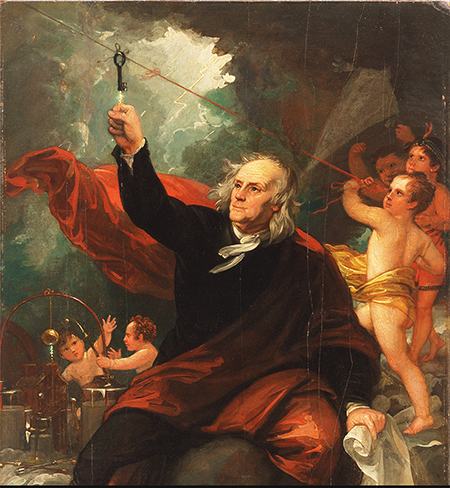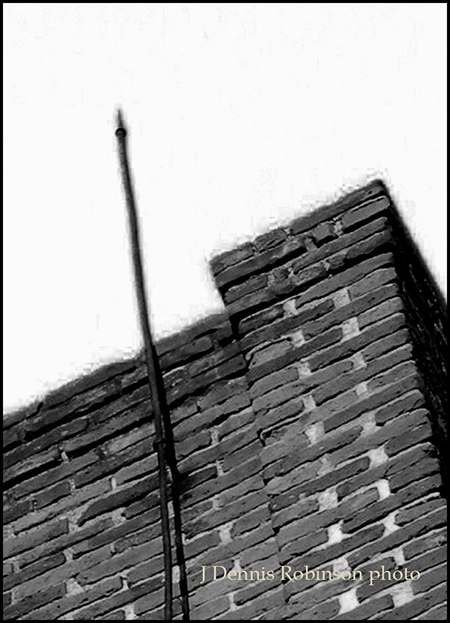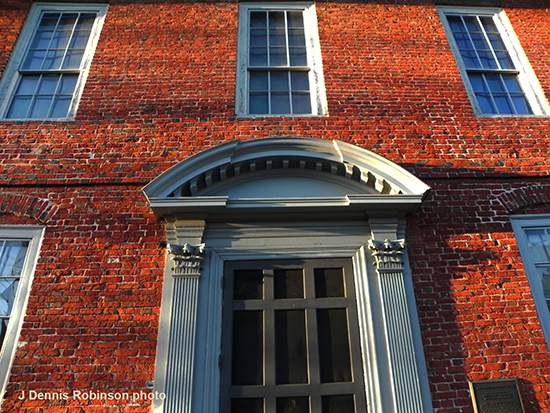Likely Lightning Rod Legend Lives On
TMS Architect’s guest blogger and local historian, J. Dennis Robinson, provided us with a December post that, in this season of light, appropriately turns its attention to electricity, Ben Franklin and an historic Portsmouth home.
I’m getting a reputation as a skeptic and a debunker. That stings. The historian’s job is to dig deep and present the facts. Unfortunately for us, so much of what people know about the past is based on legends, myths, and folklore. So historians often say, “Well, that didn’t really happen, but it’s a great story.”
Some people just can’t handle the truth. They prefer to believe that George Washington chopped down the cherry tree, Columbus discovered America, and the Pilgrims were kind and gentle people. So I’m Mr. Buzzkill.

Benjamin Franklin Drawing Electricity from the Sky c. 1816 by Benjamin West (The Philadelphia Museum of Art).
But this month, I bring joyful news. It looks like the lightning rod on the historic Warner House in Portsmouth, NH is very very old. Legend says the crude, pointed, metal shaft was placed there by Benjamin Franklin himself. Ben certainly didn’t climb up the side of the 1716-era brick house. He had taken a bad fall when he visited Portsmouth in 1763 and was recuperating. But he may have “conducted” the installation of the lightning rod. The chunk of metal used to ground the “Franklin Rod” has been unearthed and declared authentic to the era by an archaeologist.

Lightning rod on the historic Warner House may have been installed under the dirtection of its inventor, Benjamin Franklin, when he visited Portsmouth, NH in 1763. (j. Dennis Robinson photo)
We were still a British colony in 1763, a dozen years away from the American Revolution. Ben was the Deputy Postmaster for King George III at the time. He was making the rounds of all the colonies, setting up post offices and improving mail delivery. The owner of the house at the time, Jonathan Warner, was a wealthy merchant with close ties to the British aristocracy. So far, so good.

Architecturally unique, the 1716 Warner House on Daniel Street is the earliest urban brick house in northern New England. The nonprofit museum will celebrate the 300th anniversary of the colonial mansion in 2016. (J. Dennis Robinson photo).
We have no evidence that they met. But in a small, but important seaport like Portsmouth, it is more than likely. Ben was super famous for his experiments in electricity and his Poor Richard’s Almanack. He was one of the richest guys in the colonies, America’s first millionaire, some say. The Warner House was among the most magnificent and tallest buildings in town at the time. If it walks like a duck and quacks like a duck — I’m ready to believe this legend has legs.
To read more about the Warner House lightning rod click here. Dennis Robinson is editor and owner of the popular website SeacoastNH.com and author of a dozen books about history. His latest release is MYSTERY ON THE ISLES OF SHOALS: Case Closed on the Smuttynose Island Ax Murders of 1873. You can follow his history postings on Facebook. His newest website is SmuttynoseMurders.com





